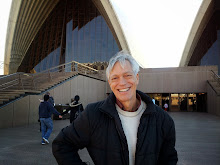Sammartini and the Italian sinfonia
I. Contemporary meanings of symphony, sinfonia, etc.; use of sinfonia in 20th-c. texts in English to designate overture (opera symphony)
II. Importance of designations: church, chamber, theater
III. Different national styles; significance of Italian style in developing Classic style
3 major national styles of 18th c. -- Italian was the leader - the language of opera; Italians invented many figures, textures, phrase structures assoc. with Classic music:
Italian style
described as pleasant, singing, brilliant, varied, expressive
suppleness of melody; contour of graceful descent and rise; chains of figures
articulation into 2-meas. phrases
use of 3rds and 6ths bet. Sop. And bass
use of appoggiaturas
clarity of period structure
slow and regular chord changes
clarity of texture (thin): maintaining of rhythmic pulse without interfering with predominance of melody -repeated notes, punctuating bass; Alberti bass
III. Sammartini (c. 1700-75)
Biography
A. Work in Milan (his father, Fr. oboist, settled there in early 1690's); suggestion that S. may have also played oboe; became leading church composer - organist and maestro di cappella; his music perf. for religious and state occasions, for noblemen in diff. settings
B. Admired by Quantz on a visit to Milan; may have taught Gluck; Boccherini played under him; Mozart knew him through visits to Milan, 1770-73; JC Bach acquainted w/ him in Milan (1757-62)
C. Music known in Vienna (Milan under Austrian rule)
Symphonies: mostly 3-movement (only one 4-mvt. extant; one 2-mvt.; one-mvt. sinfonia)
A. 67 authentic symphonies out of 135 attributed to him (Churgin)
Early: late 1720s to c. 1740 (18 symph.)
Strings (a 3 or a 4): some “trio symphonies”
Hybrid Baroque-Classic style, Classic elements predominating (Churgin)
Most mvts. bipartite
most in sonata form (often ident. by others as binary or rounded binary) - predominance of what she calls “full” sonata form, with primary theme beg. dev. and recap
most mvts. Polythematic; some elements of Classic thematic develop.
Late Baroque infl. strongest in slow mvts.
sequential treatment
Middle: c. 1740 - 1758 (37 symph.)
Strings plus paired horns or trumpets (J-C 30 ind. oboe & horn pts.); also strings
Fully early Classic
Most end with 3/4 minuet, some with trios; non-minuet finales in 7 symphonies
Late: 1759-1774 (12 symph.)
Features of later Classic
C. Interchangeability as music with opera (JC-38/I and J-C 66a/I used in his opera Memet of 1732)
Individual works:
J-C 7 in C Major: most Baroque; son. Form with incomplete recap - prob. Later 1720s/1730s
triple meter 1st mvt. - rare later; sounds like Bar. concerto mvt.- terraced dynamics, imitative counterpoint bet. Violins, crossing violins; sequences, falling fifth, frequent seventh chords, chromatic progs., frequent leaps in melody, repeated bass figures and motives; steady bass motion
Classic elements - many mm. Of simple I-V; organized harmonic rhythm
concerto infls. In slow mvt.; tonic minor contrast in slow mvt. (Early Classic pref.); 12/8 of slow mvt. Suggests siciliano
J-C 62 in A major
two versions: one (6 sources) with “well-developed finale” (IIIa); other is minuet finale (IIIb)
1st mvt. - “motoric” rhythm of S’s middle symphonies - steady 8th note bass - background to rhy. Reps. & contrasts, phrase asymmetries; irregular phrase lengths
brilliant violin figuration
move from I to V
metrical shifts
Thursday, August 30, 2007
Subscribe to:
Post Comments (Atom)

No comments:
Post a Comment